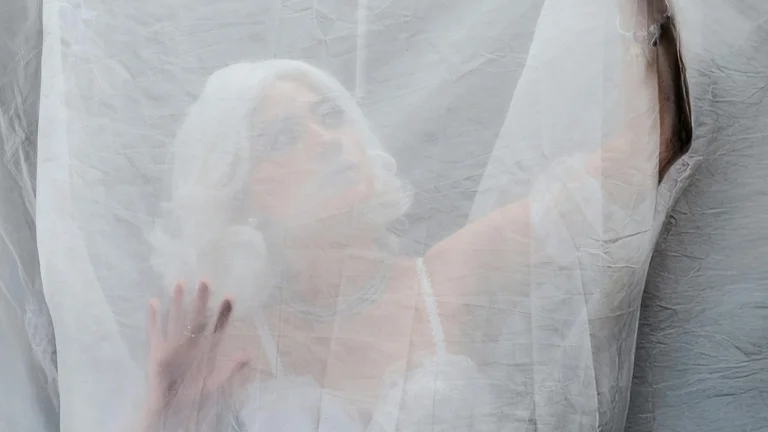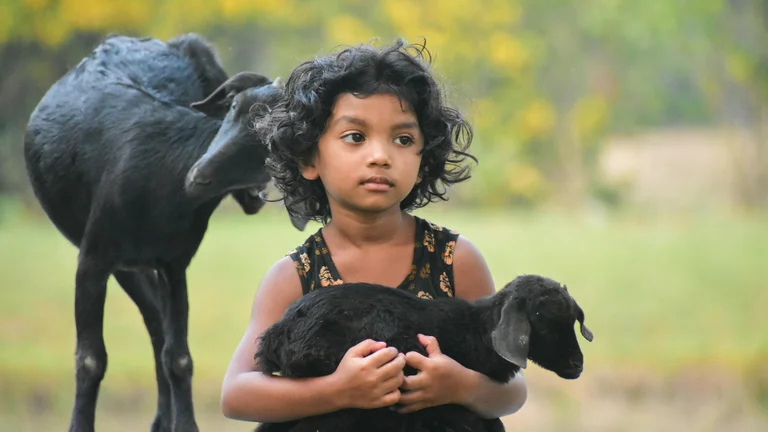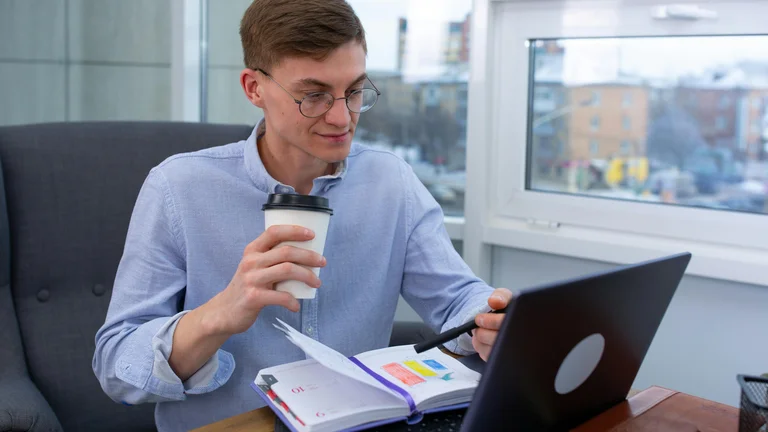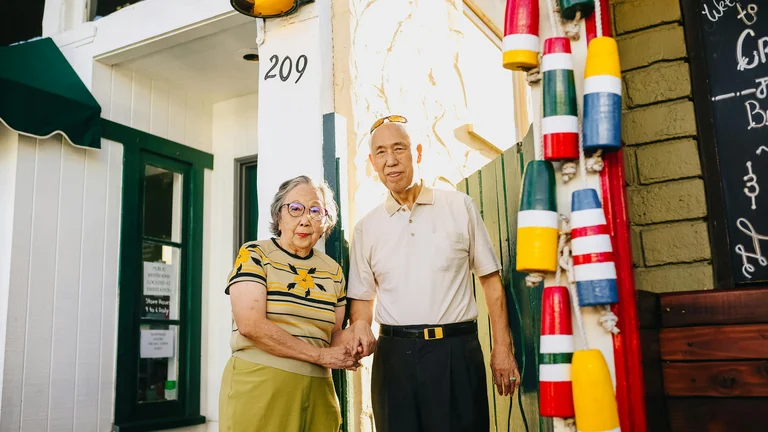Exploring the Charm of K-Drama Characters Who Always Trip and Fall into Love

Across countless K-Dramas, a recurrent character archetype endears itself to audiences: the character who literally trips over their own feet and figuratively falls headfirst into love. These characters embody vulnerability, innocence, and a certain clumsy grace that provides both comedic moments and emotional resonance. They often serve as conduits for the viewer to experience the awkward yet exhilarating beginnings of romance. This article delves into the nuances of these characters, dissecting why their trope endures, how it manifests within narrative structures, and what it reveals about cultural ideals regarding love in Korean popular media.
At its core, the trope of literally tripping is a physical embodiment of emotional clumsiness. It externalizes the internal turmoil, uncertainty, and excitement that accompany new romantic feelings. By falling—both physically and metaphorically—these characters display a candid and relatable humanity. The vulnerability expressed through such antics creates a safe space for viewers to engage empathetically with the character’s romantic journey. This vulnerability melds seamlessly with the development of affection, turning what might be a simple comedic slapstick move into a symbol of innocence and genuine connection.
More than just comic relief, these characters often symbolize the audience’s own hesitations with love. Their genuine reactions and sincere expressions contrast with typical stoic or overly confident romantic leads. This contrast highlights a layered narrative device that humanizes romance through imperfection. As a result, the 'trip and fall' characters become essential to the genre's emotional texture, grounding extravagant plotlines with attainable, human moments.
Character Archetypes That Frequently Trip and Fall into Love
K-Dramas vary widely—from medical thrillers to historical sagas—but the archetype of characters who stumble into love consistently appears. Usually, these characters fall under one or more of the following profiles:
- The Innocent Protagonist: Often shy, inexperienced, or naive about romance, these protagonists’ initial encounters with love are awkward and visibly nervous. Their physical stumbling mirrors emotional vulnerability.
- The Clumsy Best Friend: Frequently providing humor and heartfelt support, this character type usually has unspoken feelings for the lead and experiences many mortifying, love-triggered mishaps.
- The Unlikely Hero/Heroine: Typically confident in their professional or personal pursuits but surprisingly awkward in romance, their tripping incidents symbolize the unexpected nature of love infiltrating their controlled lives.
- The Innocent Outsider: A newcomer to a social group or setting, whose unfamiliarity with the environment leads to literal and figurative missteps that spark romantic interest.
Each archetype approaches romance with a distinct energy, but the 'trip and fall' motif threads through their interactions, generating organic, endearing moments. The trope’s adaptability allows writers to slot these characters into diverse narrative contexts, maintaining freshness while satisfying an audience craving authentic emotional experiences.
Underlying Themes Behind the Trip-and-Fall Trope
This trope isn't just about physical comedy or clumsy gestures; it carries deeper thematic weight tied to growth, vulnerability, and fate. The act of tripping represents a loss of control, often foreshadowing the uncontrollable nature of love. It's a narrative device suggesting that love, like a sudden stumble, is unexpected and cannot be meticulously planned.
Moreover, falling down physically correlates with a humbling experience, a moment when a character is stripped of their usual confidence or composure. This humbling often allows space for genuine connections to form, drawing them closer to the object of their affection free from pretense.
Fate or destiny is another prominent theme: the accidental fall often happens at the exact moment or location where two characters meet, hinting that love’s timing is serendipitous. This intertwining of chance and emotional awakening emphasizes Korean dramas’ prevalent fascination with 'In-yeon' (인연), the concept of destined relationships.
Iconic Examples of K-Drama Characters Who Often Trip and Fall into Love
To understand the depth of this trope’s impact, it's necessary to examine specific popular K-Drama characters who exemplify it. These characters illustrate varied executions of the trope, each aligned with the show’s tone and storyline.
1. Kim Shin-woo from "True Beauty"
Shin-woo’s character is a classic representation of the innocent love interest fumbling his way through romance. His awkwardness when confessing feelings and physical mishaps create adoring laughter among fans. His literal stumbles enhance the vulnerability shining beneath his confident exterior as a top student and responsible adult.
2. Eun Dan-oh from "Extraordinary You"
Dan-oh’s character frequently trips, symbolizing her confusion and emotional upheaval after discovering she is a comic book character with limited self-determination. Every physical fall doubles as a metaphor for her grappling with newfound feelings and autonomy, making her romance feel both poignant and grounded.
3. Chun Song-Yi from "My Love from the Star"
Song-Yi’s clumsiness is renowned: she is iconic for tripping over things, falling into others’ arms, and causing comedic chaos. Her physical accidental falls contrast with her strong personality, highlighting the multifaceted nature of falling in love—both terrifying and exhilarating.
Table: Comparative Overview of Trip-and-Fall Characters
| Character | Drama | Archetype | Nature of Clumsiness | Romantic Significance |
|---|---|---|---|---|
| Kim Shin-woo | True Beauty | Innocent Protagonist | Awkward confessions, physical stumbles | Shows vulnerability beneath confidence |
| Eun Dan-oh | Extraordinary You | Innocent Outsider | Trips caused by confusion/fate | Reflects struggle with destiny and personal agency |
| Chun Song-Yi | My Love from the Star | Unlikely Heroine | Frequent falls, comedic accidents | Highlights her complexity and emotional depth |
| Ji Eun-taek | Because This Is My First Life | Clumsy Best Friend | Social and romantic awkwardness | Genuine expression of unspoken emotions |
Why Audiences Connect Deeply with These Characters
The enduring appeal of these characters lies primarily in the relatability of imperfection. Their foibles reflect real human awkwardness in approaching love, especially in cultures where direct expression of romantic interest may feel vulnerable or intimidating. Viewers see these characters navigating emotions clumsily but sincerely, which validates their own experiences.
Furthermore, the comedic and tender moments balance each other, generating a wholesome emotional rollercoaster. These characters’ falls often break tension or initiate important plot developments, propelling romance and character growth simultaneously. Such layered functionality within scenes adds narrative richness and makes these characters memorable.
The visual aspect of physically falling has high symbolic resonance. It externalizes the internal dynamics of vulnerability and risk-taking in love, crafting a visual shorthand that transcends language and culture. This universality explains why the trope resonates not only in Korea but internationally, feeding into the global popularity of K-Dramas.
Psychological and Cultural Interpretations of Clumsiness in Romance
Psychologically, clumsiness in romance can signal authenticity. In a conversation surrounding idealized portrayals of romance, characters who stumble offer a refreshing contrast. Their disarray demonstrates honest human responses to complex feelings, making their journeys captivating and emotionally credible.
Korean culture historically values humility and subtlety in personal interactions, especially in traditional dating rituals. Characters who trip and fall embody this ideal by representing sincere intentions manifested awkwardly rather than through rehearsed perfection. This blend of humility and earnestness appeals to a cultural penchant for emotional honesty over flamboyant displays.
Moreover, these portrayals contribute to a collective narrative that love is an unpredictable, sometimes chaotic force—precisely the element that makes it enchanting. This aligns with Korean romantic storytelling that often pairs fantasy elements with everyday experiences, blending realism with idealism.
Step-By-Step Breakdown: How K-Dramas Use the Trip-Fall Trope to Develop Romance
Writers implement the trip-and-fall trope in stages to maximize its emotional and narrative impact:
- Introduction of Character Vulnerability: Early interactions often showcase characters’ clumsiness to establish a humanizing trait and create empathy.
- First Physical Fall: The initial trip, often coinciding with a meaningful glance or brief interaction, triggers romantic curiosity or recognition.
- Repeated Mishaps: Recurring stumbles allow building layers of interaction, mixing humor with increasing emotional investment.
- Emotional Climax: A significant fall, physical or metaphorical, coincides with a deeper romantic revelation or confession.
- Resolution and Growth: Characters gain confidence or acceptance of their feelings, sometimes overcoming their awkwardness symbolically or literally.
The deliberate pacing of this trope nurtures slow-burn relationships with believable evolution. It prevents rushed romantic developments and fosters a connection that grows naturally with the audience’s attachment.
Table: Psychological Impact of Clumsy Romantic Characters on Viewers
| Viewer Emotion | Impact Mechanism | Effect on Engagement |
|---|---|---|
| Empathy | Relating to vulnerability and awkwardness | Increases emotional investment in character arcs |
| Amusement | Humor through physical mishaps | Provides levity and memorable moments |
| Hope | Seeing genuine connections form despite imperfections | Encourages belief in love’s accessibility |
| Identification | Recognizing personal experiences in character struggles | Deepens viewer-character bond |
Tips for Writing Believable Trip-and-Fall Characters in Romance Dramas
For scriptwriters and creators aiming to craft trip-and-fall characters who avoid clichés or one-dimensional portrayals, the following guidelines help:
- Embed Emotional Depth: Develop clear motivations and insecurities behind clumsy actions to prevent superficial humor.
- Balance Humor and Gravity: Use physical mishaps to lighten scenes but anchor them in meaningful emotional progression.
- Avoid Overuse: Space out clumsy moments to maintain freshness and avoid viewer fatigue.
- Contextualize Clumsiness: Tie physical falls to narrative turning points or character growth.
- Show Growth: Illustrate how characters become more comfortable and confident through their romantic journey, even if occasional slips remain.
Such strategies sustain audience interest and ensure the trope complements rather than overwhelms the romantic plot.
How This Trope Influences Global Perceptions of Korean Popular Culture
The charm of characters who trip and fall in love extends to international K-Drama fandoms, influencing perceptions of Korean culture. This trope showcases softer, approachable aspects of interpersonal relationships, contrasting with stereotypes of formality or reserve sometimes associated with East Asian cultures.
Global viewers often cite these moments as highlights illustrating the depth and warmth of Korean storytelling. This portrayal of affection—innocent, gradual, and fraught with relatable awkwardness—appeals universally. It demystifies the process of falling in love, making it accessible and heartwarming across cultural divides.
Furthermore, the lightheartedness mixed with genuine emotional stakes aligns perfectly with global appreciation for romantic comedies and slice-of-life genres, resulting in a broad and varied audience that spans generations and geographies.
Table: Key Benefits of Trip-and-Fall Romance Characters in K-Dramas
| Benefit | Description | Example |
|---|---|---|
| Enhanced Relatability | Shows characters with believable flaws | Kim Shin-woo’s awkward confessions |
| Emotional Layering | Combines humor and sincere emotion | Chun Song-Yi’s frequent falls and charm |
| Symbolism | Physical fall as metaphor for emotional surrender | Eun Dan-oh’s discovery and growth |
| Plot Progression | Trips create opportunities for character interaction | Recur in "Because This Is My First Life" to build relationships |
Common Criticisms and How They Are Addressed
Despite their popularity, trip-and-fall characters occasionally face criticism for perpetuating stereotypes, especially around female characters being perpetually clumsy or helpless. Some argue this trope can undermine character agency by focusing on vulnerability to the point of caricature.
Contemporary dramas often navigate this by balancing clumsiness with moments of strength and decisiveness. Writers increasingly create multidimensional characters who may trip but also demonstrate resilience and assertiveness. Moreover, the trope applies to male characters as well, subverting traditional gender expectations and normalizing emotional openness across genders.
Modern K-Dramas also incorporate variations on the trope, showing characters tripping into love while wrestling with complexities like career ambitions, family expectations, or mental health challenges, adding realism and depth.
Exploring the Role of Setting and Cinematography in Highlighting These Characters
The physical act of tripping is often accentuated through creative cinematography and carefully chosen settings. For instance, a park with scattered leaves or a crowded street creates natural conditions ripe for comedic falls. Directors use slow motion or close-up shots to emphasize the character’s surprised expressions and the palpable tension of the moment.
Lighting and music also play critical roles; soft lighting and whimsical, lighthearted scores accompany such scenes to convey warmth rather than embarrassment. These audiovisual elements enhance the emotional tone, ensuring the falls aren’t merely slapstick but emotionally resonant beats in the story.
Settings often serve symbolic purposes as well. Urban landscapes highlight isolation turning into connection; school corridors emphasize youth and discovery; quaint cafes or libraries suggest intimacy and quiet vulnerability. By weaving tripping incidents into these environments, K-Dramas enrich symbolic meaning.
List: Essential Elements for Writing Effective Trip-and-Fall Romantic Scenes
Conclusion of Rich Characterization Through Trip-and-Fall Tropes
Ultimately, K-Drama characters who trip and fall into love present a layered, enduring trope that captures the messy beauty of human emotions. Their charm arises from authentic imperfections woven into carefully structured narrative arcs. By blending comedy, symbolism, cultural values, and emotional depth, these characters enrich storytelling and resonate with diverse audiences.
Their consistent presence across genres and time attests to the trope’s effectiveness in highlighting the tentative first steps of love—awkward, unpredictable, but utterly captivating. The physical stumble becomes a metaphor for the vulnerability and unpredictability at the heart of romantic connection, making these characters unforgettable fixtures in the K-Drama tradition.
FAQ - K-Drama Characters Who Always Trip and Fall into Love
Why do K-Drama characters often trip and fall into love?
This trope serves as a physical manifestation of emotional vulnerability and uncertainty. It symbolizes the unexpected and clumsy nature of falling in love, allowing viewers to connect with the characters’ authentic struggles and growth.
What archetypes commonly exhibit this trip-and-fall behavior in K-Dramas?
Typical archetypes include the Innocent Protagonist, Clumsy Best Friend, Unlikely Hero or Heroine, and the Innocent Outsider, each bringing unique dynamics to the romantic narrative through their awkward encounters.
How does the trip-and-fall trope impact audience engagement?
It increases empathy by highlighting characters’ imperfections, adds humor that balances emotional tension, and offers relatable moments of vulnerability, making viewers more invested in character development.
Are both male and female characters portrayed as clumsy in K-Dramas?
Yes. Both genders experience this trope, which challenges traditional gender roles by normalizing emotional openness and vulnerability for everyone.
How do filmmakers enhance the impact of these falling scenes?
Through deliberate choices in setting, cinematography, lighting, and music, directors emphasize the emotional tone, transforming physical clumsiness into poignant narrative moments.
Does the trip-and-fall trope perpetuate stereotypes?
While it can risk simplification, modern dramas balance clumsiness with strength and depth, presenting multidimensional characters who grow beyond their awkward moments.
K-Drama characters who frequently trip and fall into love symbolize authentic emotional vulnerability, blending humor and romance. This enduring trope enhances storytelling by making imperfect, relatable characters that resonate deeply with audiences, illustrating the unpredictable and heartfelt nature of falling in love.
K-Drama characters who trip and fall into love embody a timeless and deeply human aspect of romantic storytelling. Their physical clumsiness mirrors the inner uncertainty and vulnerability that define early love, providing compelling moments that blend humor with heartfelt emotion. This trope enriches narratives by making romance accessible and authentic, helping audiences worldwide relate to, laugh with, and root for these imperfect yet endearing characters.






